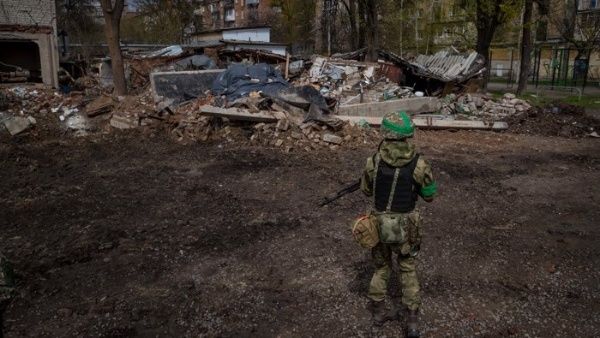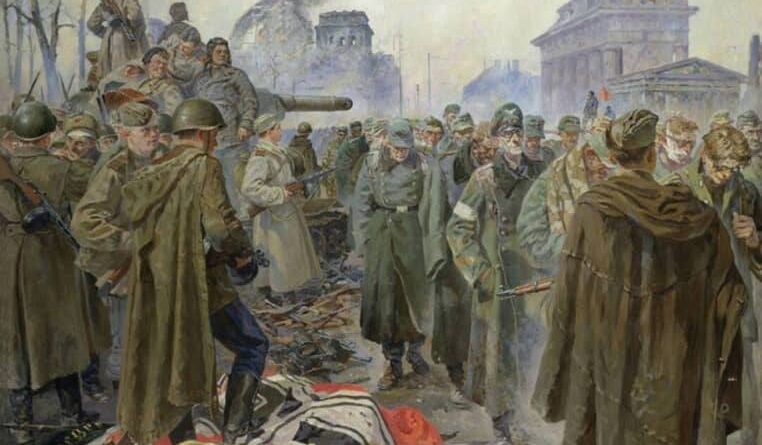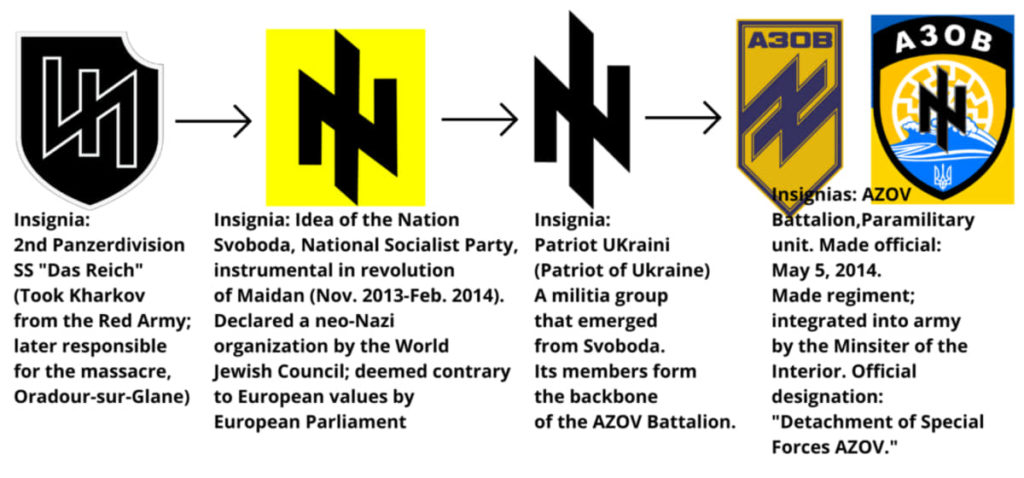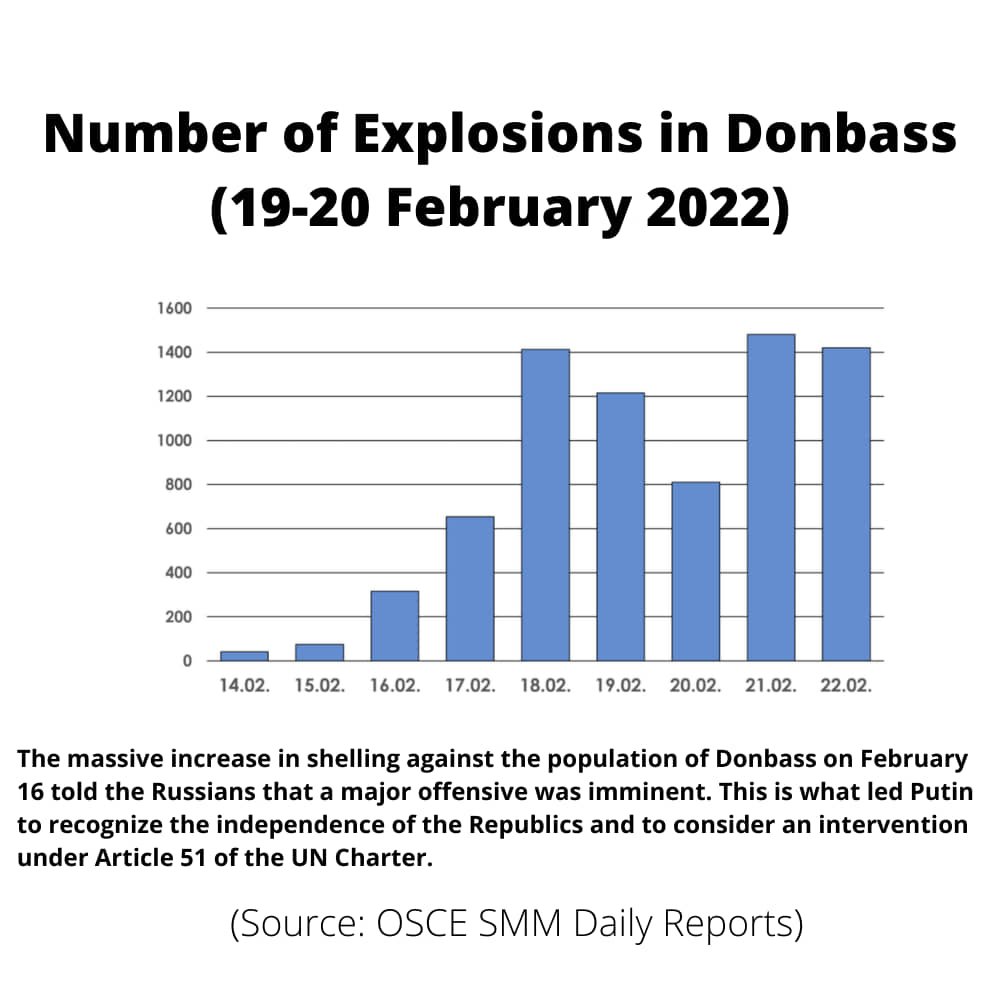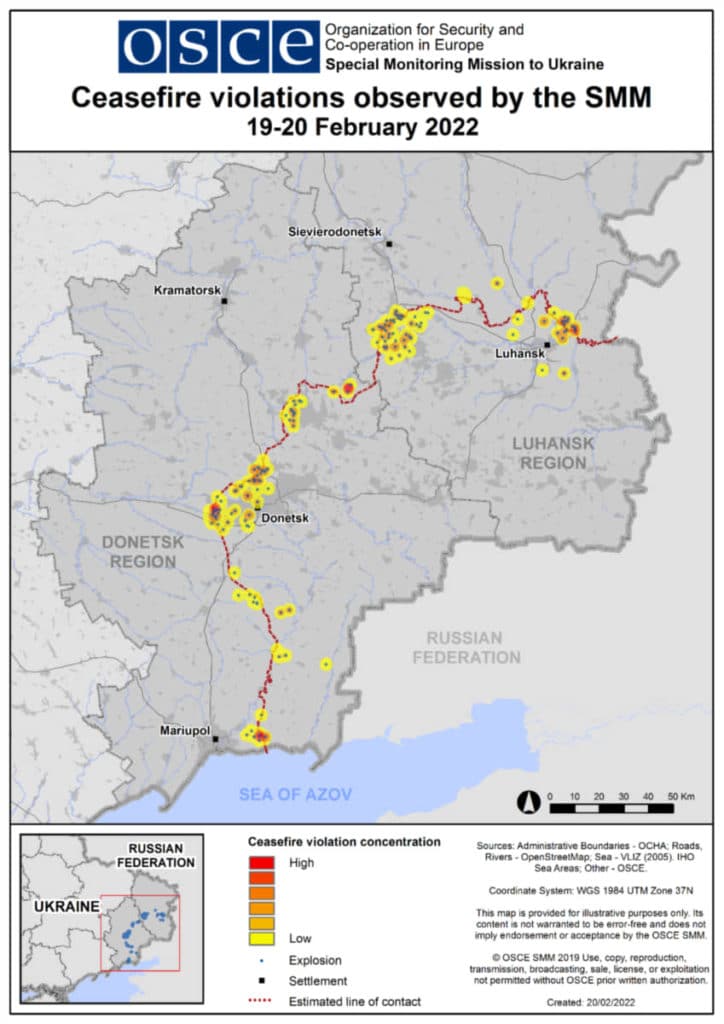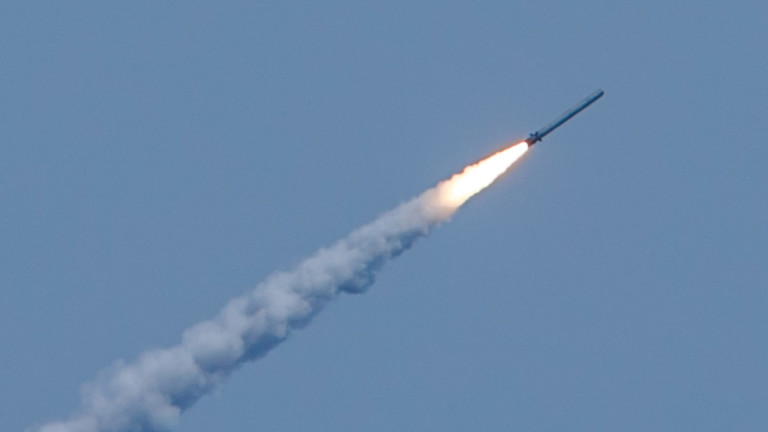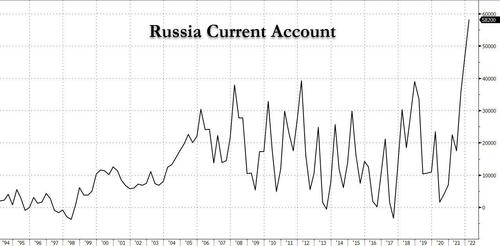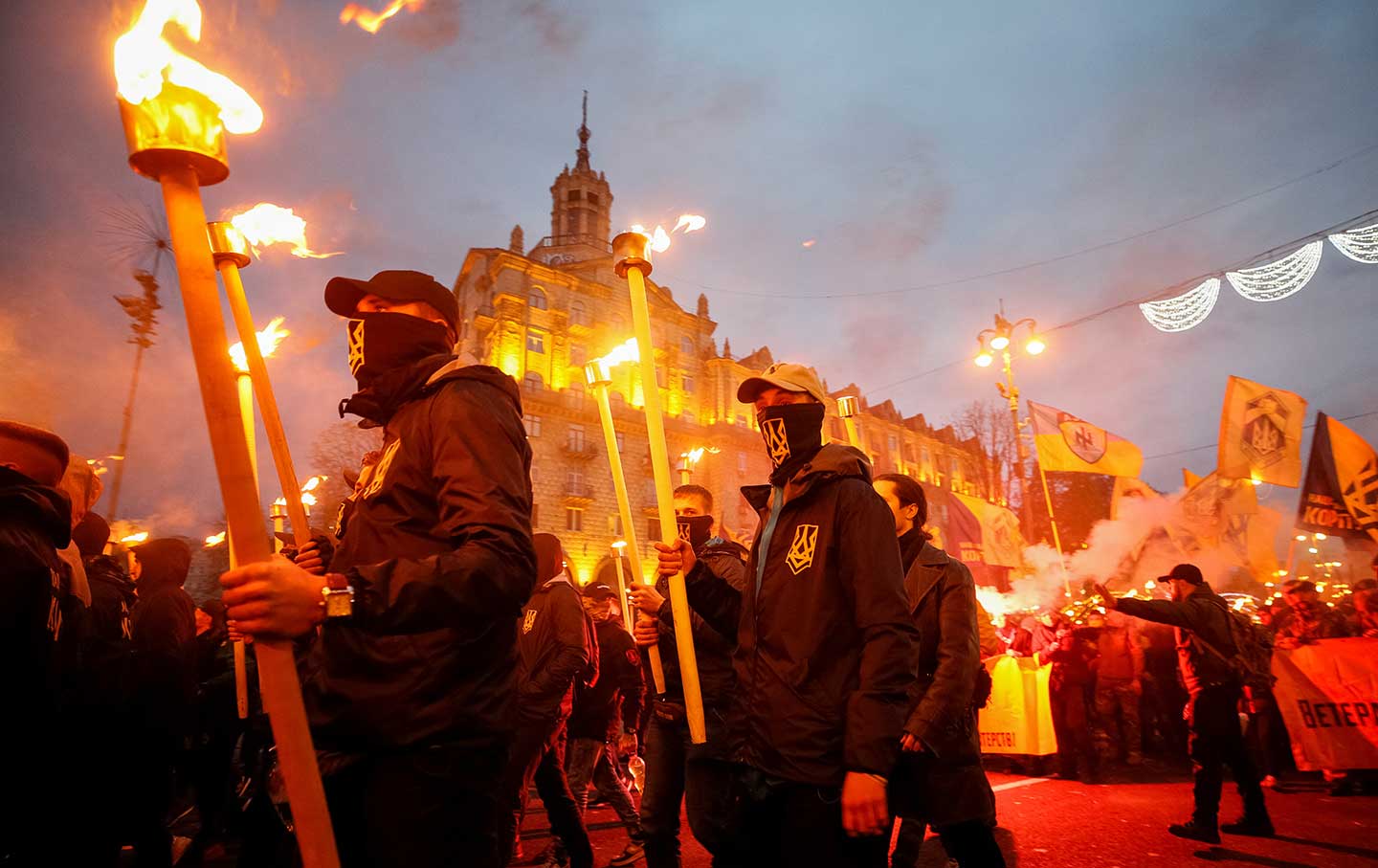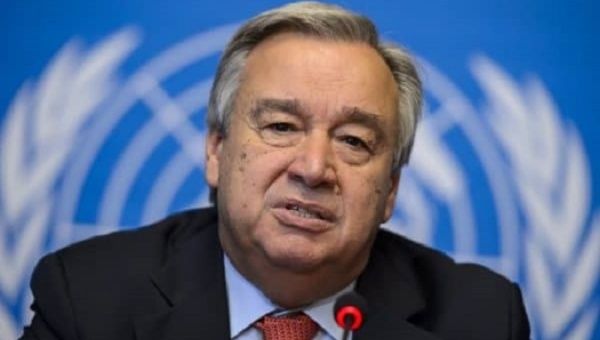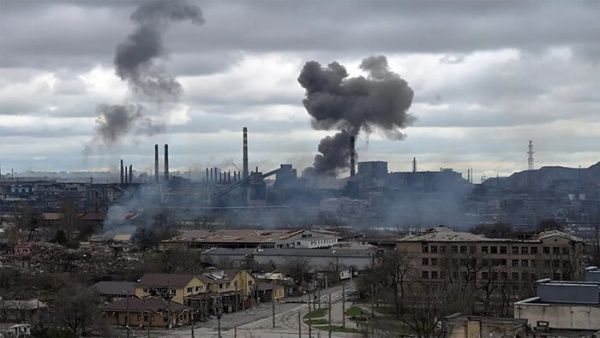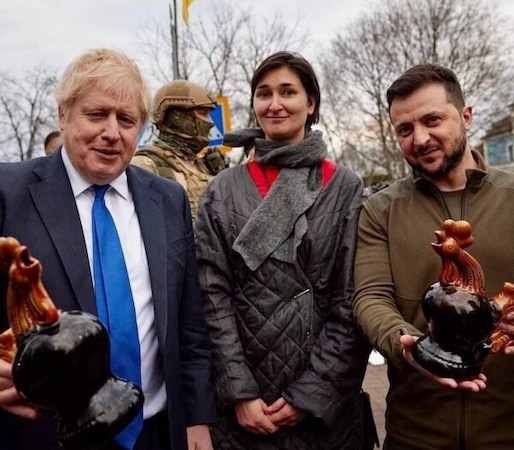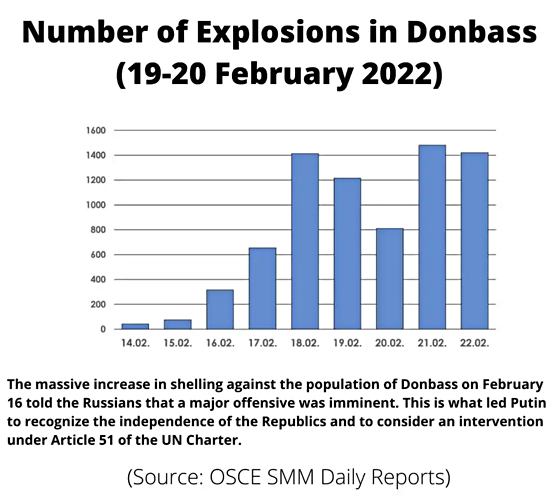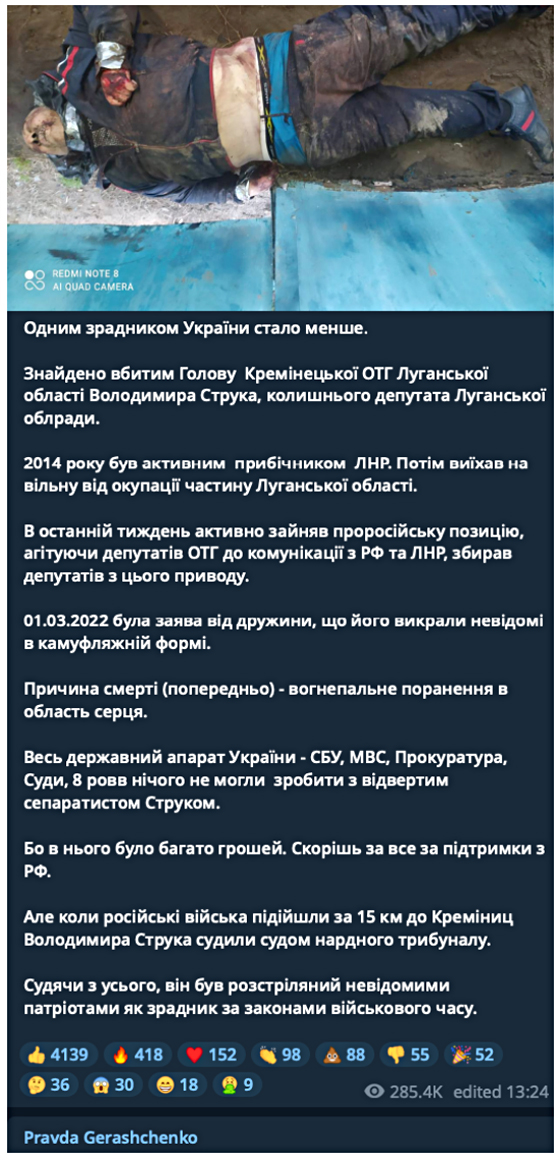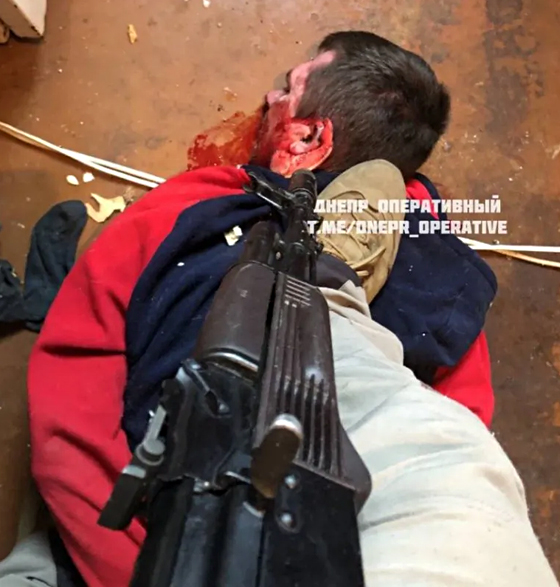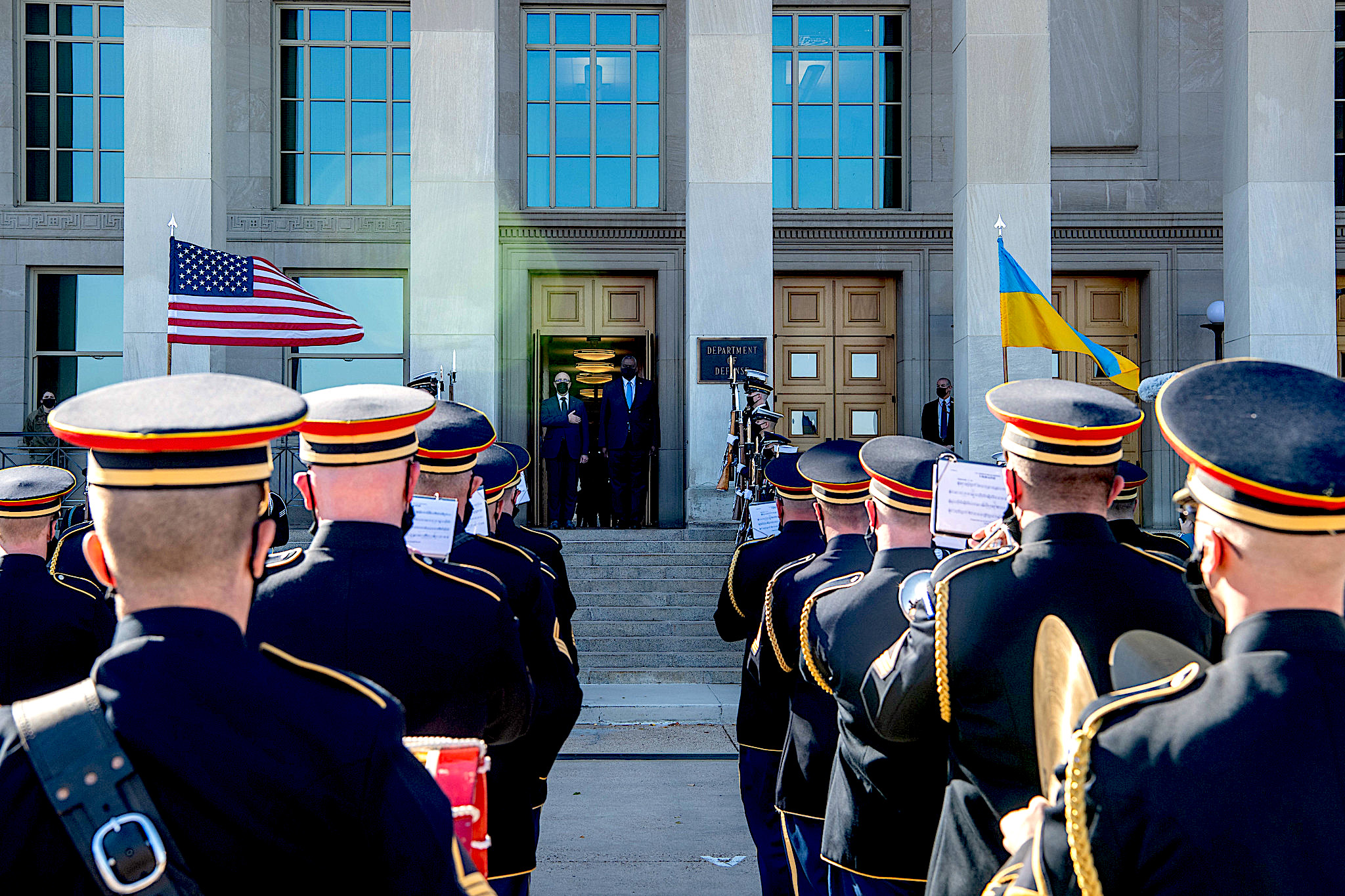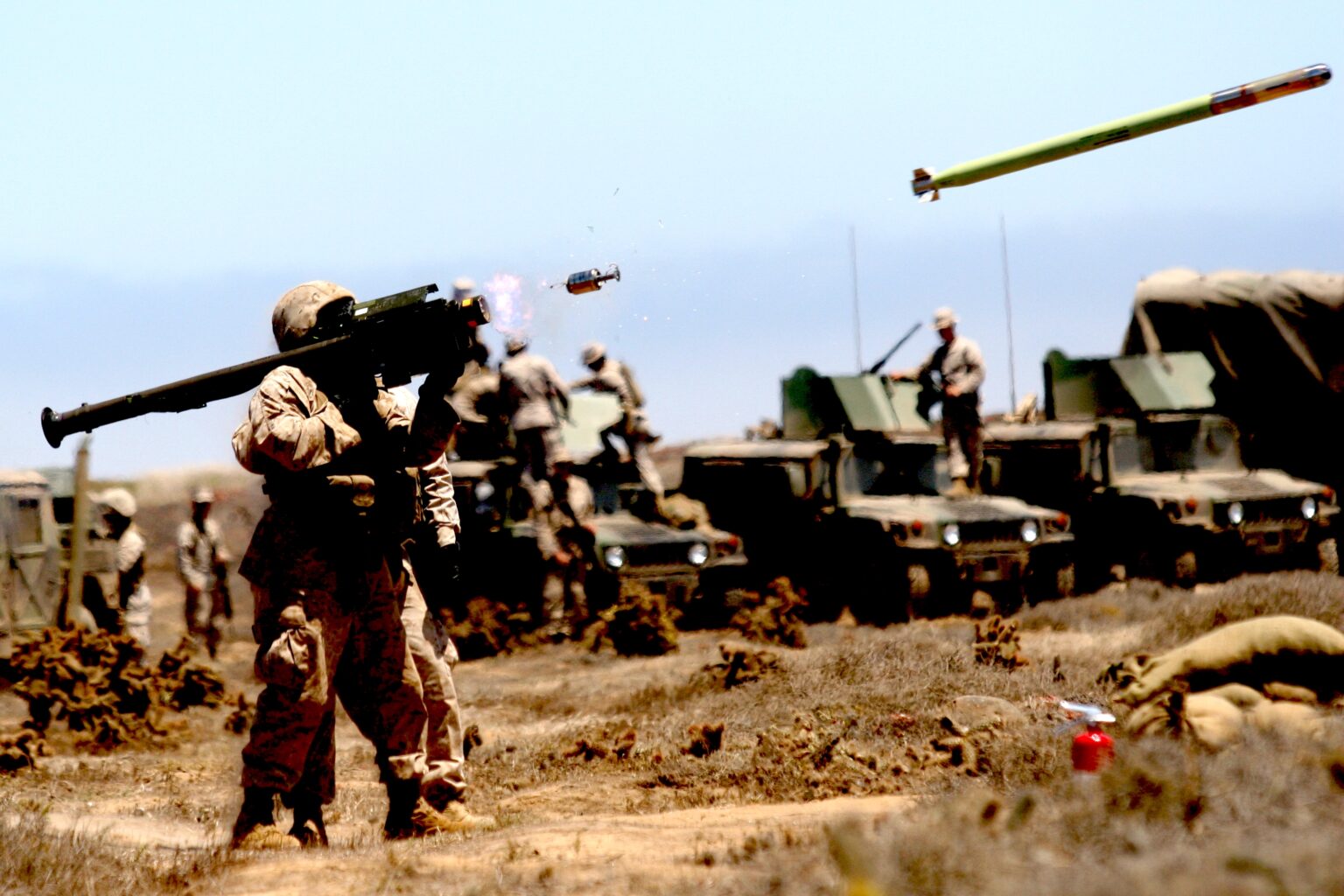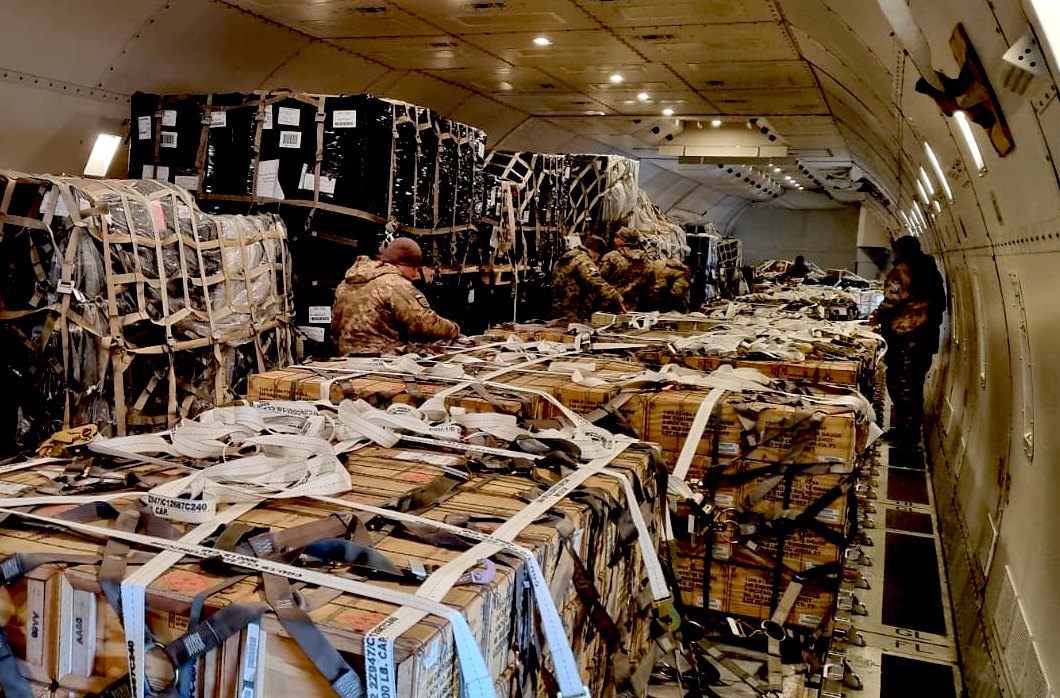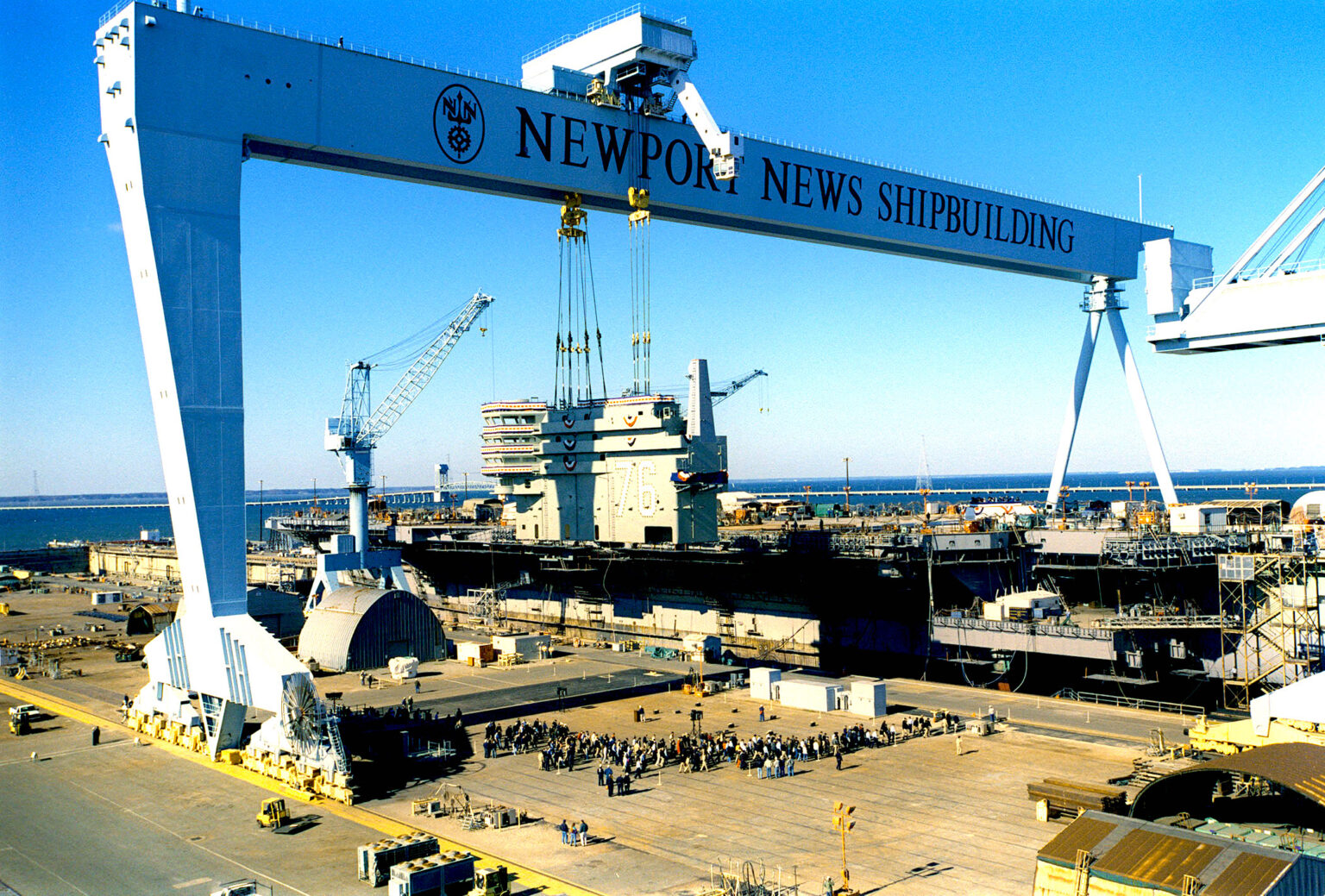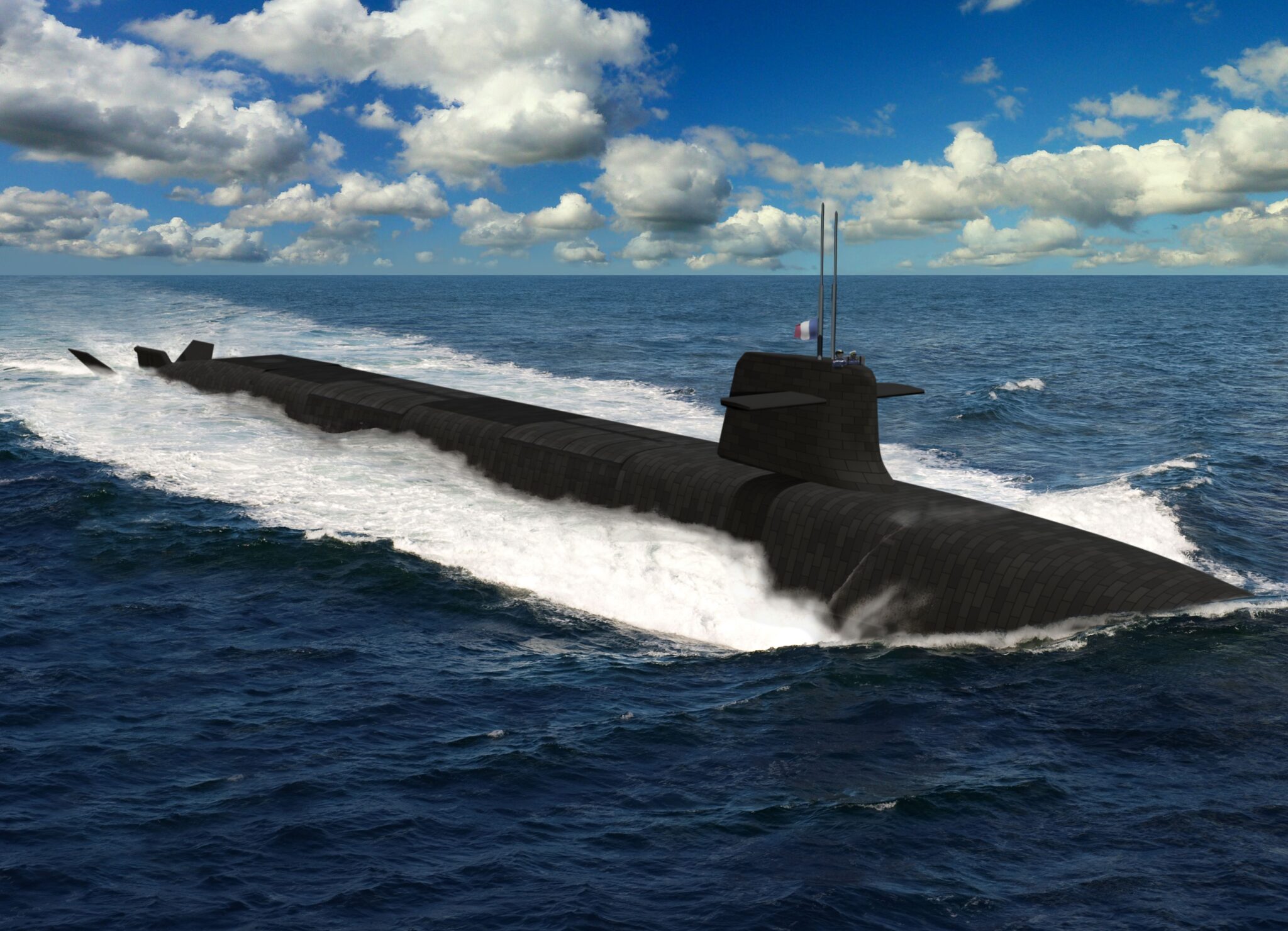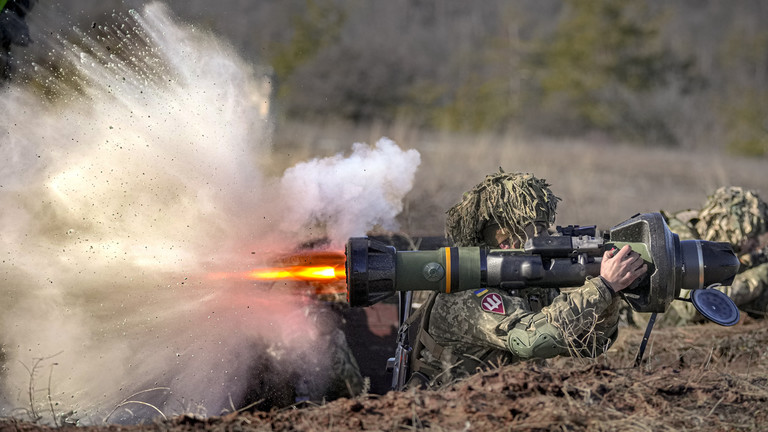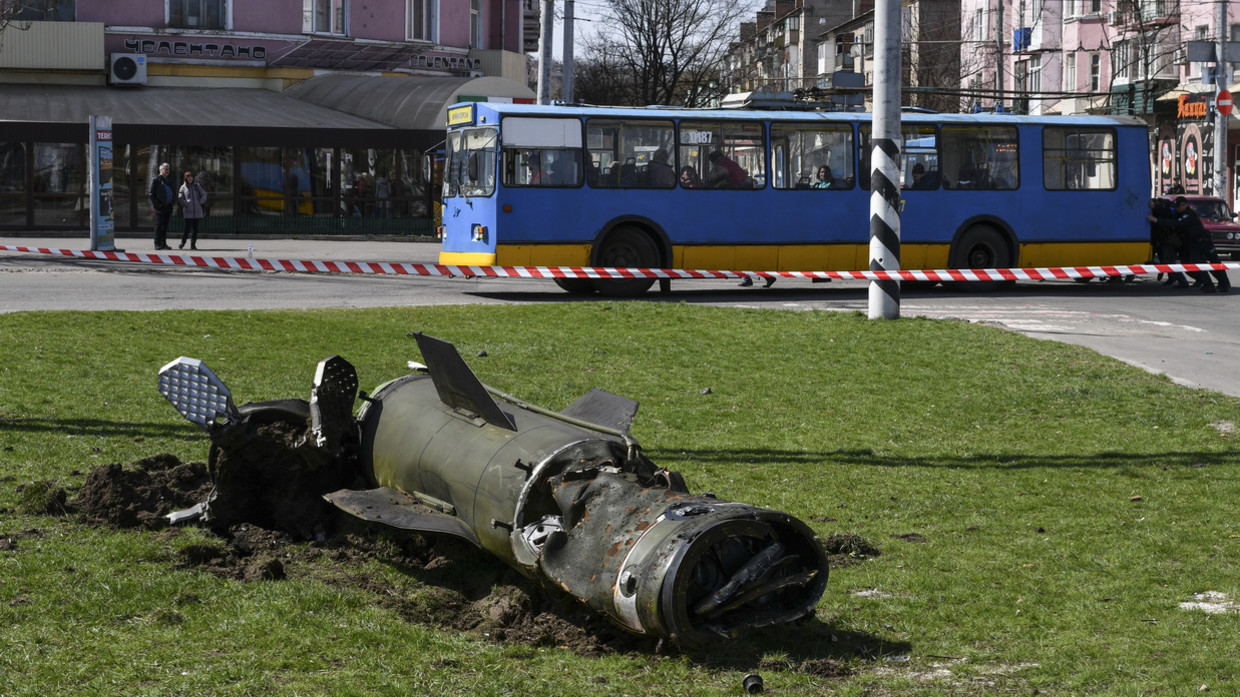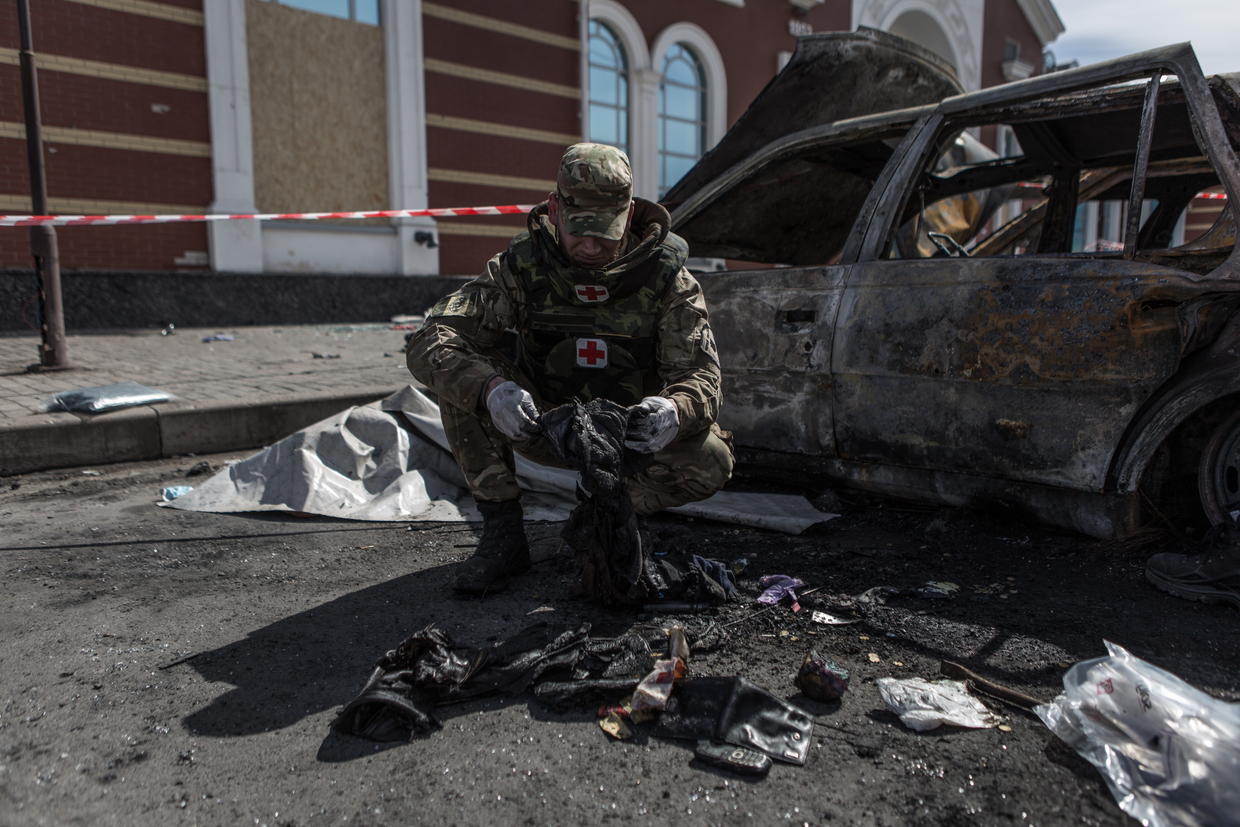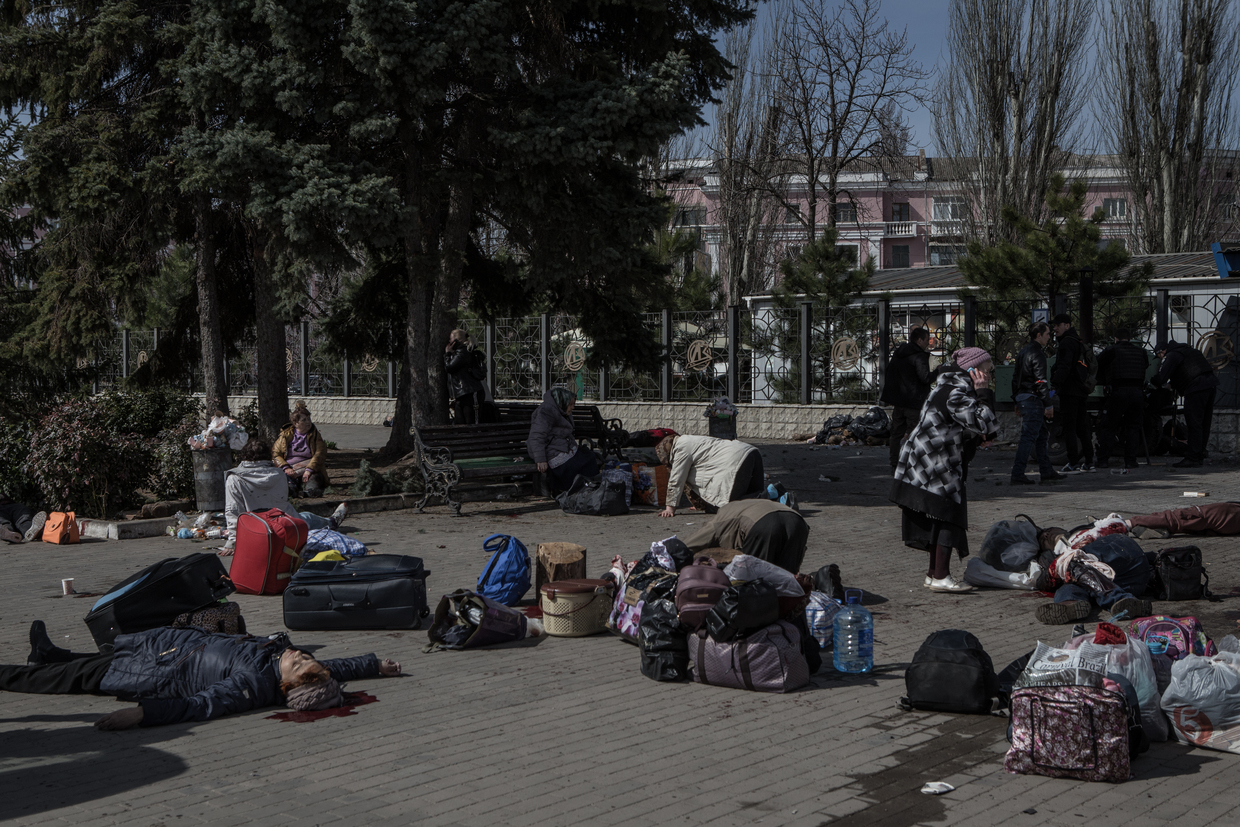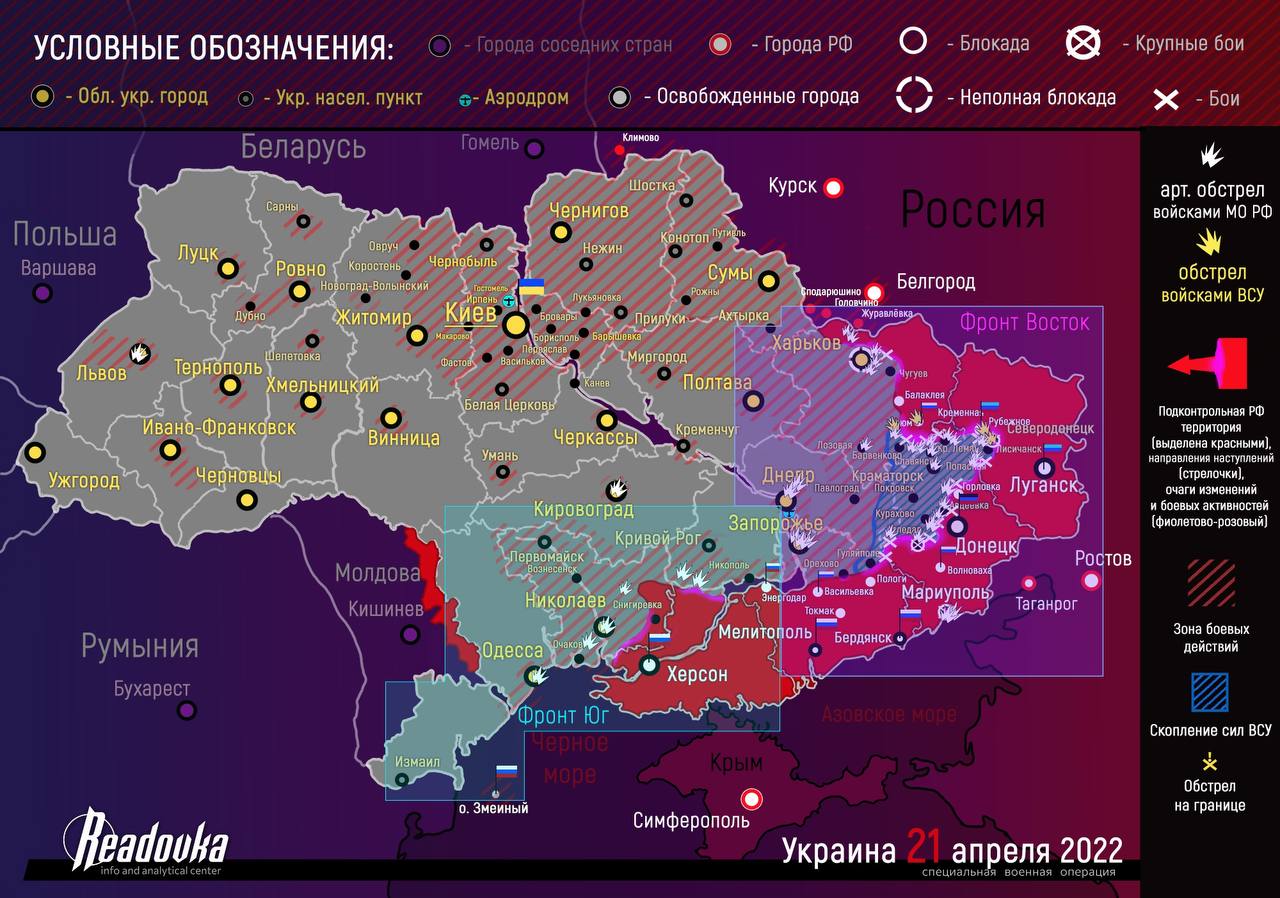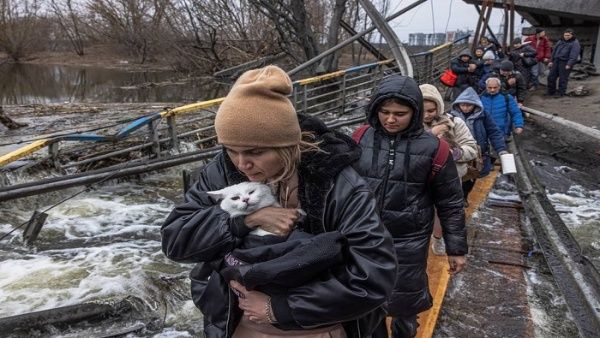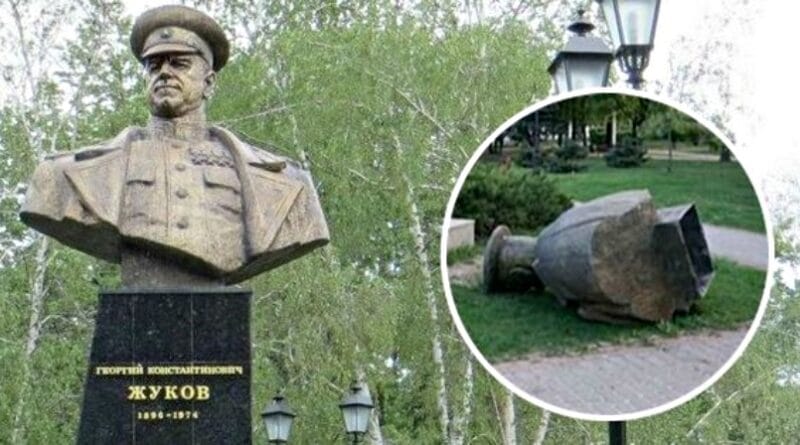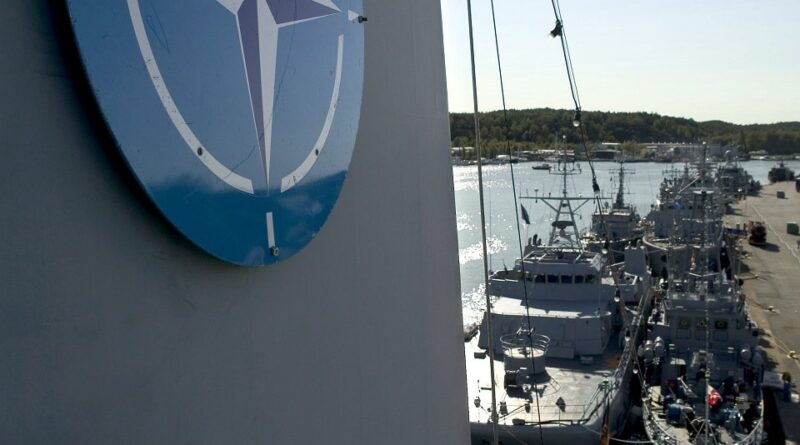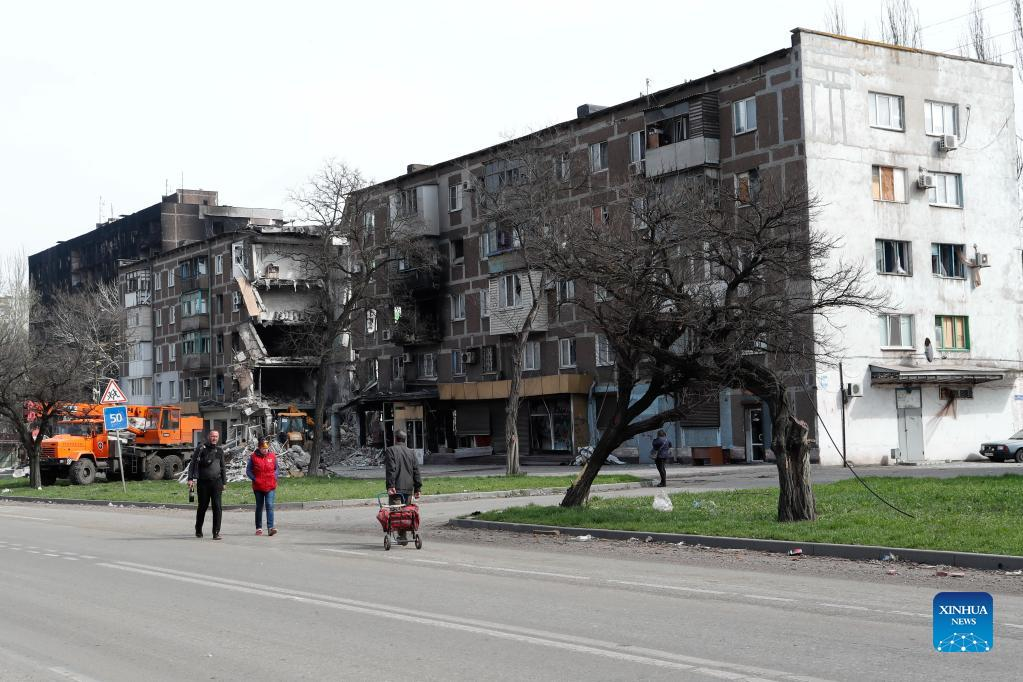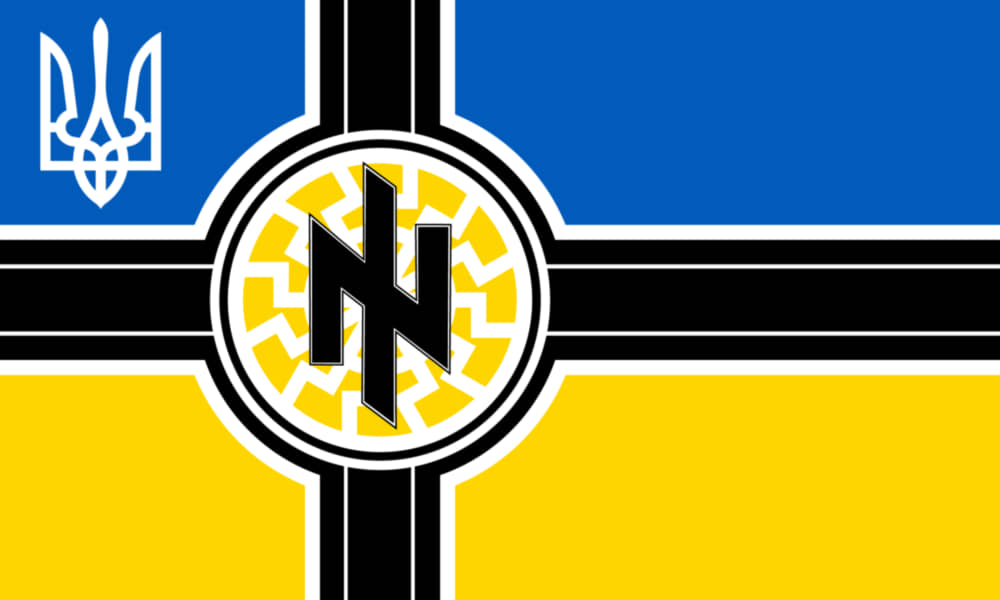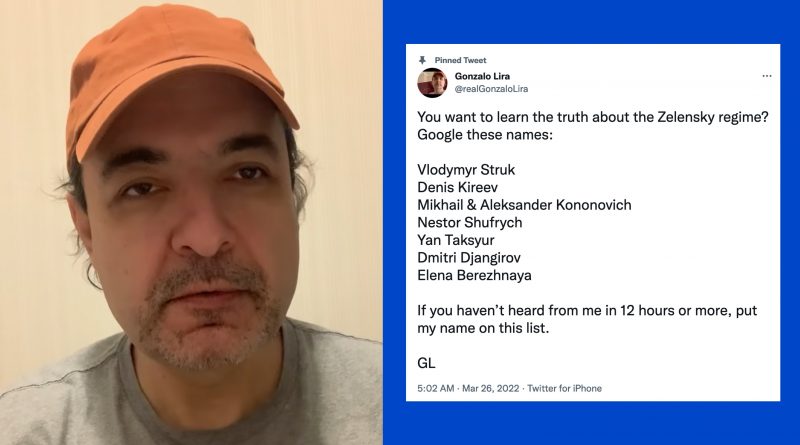
Photo taken on Nov. 23, 2021 shows the White House in Washington, D.C., the United States. | Photo: Ting Shen/Xinhua
Published 18 April 2022
On Feb. 28, President Vodolymyr Zelensky signed an official appeal to the EU, asking for Ukraine's accession via a new special procedure.
The Ukrainian conflict continued as the western city of Lviv reported missile strikes on Monday morning. The following are the latest developments:
Russia asks Montenegro to clarify on statement about break of diplomatic relations
Russia’s embassy in Podgorica has sent a note to the Foreign Ministry of Montenegro asking it to clarify on its earlier statement about the need to break diplomatic relations with Russia, an embassy official told TASS on Monday.
"We have sent a note to the Foreign Ministry of Montenegro, asking them to provide relevant clarifications," the official said.
Earlier, the Foreign Ministry of Montenegro tweeted a statement by the country’s Foreign Minister Djordje Radulovic about the need to break diplomatic relations with Russia, but a few hours later the statement was deleted from Twitter.
US seeks to reopen its embassy in Kiev, evaluates security considerations - White House
The US is seeking to reopen its embassy in Kiev, but this issue is still under consideration because it is necessary to ensure safety of diplomats, White House Press Secretary Jen Psaki told a briefing on Monday.
"Well, certainly that’s our objective is to open it [the embassy]. But what we are evaluating is, obviously, security considerations and when the State Department is prepared to do that," she said commenting the decision of Spain to resume the work of its diplomatic mission in Kiev, following Italy, France and a number of other European countries.
"Obviously, having a diplomatic presence on the ground is important," Psaki assured.
But it is the State Department, that should give its recommendation regarding "who should go first" and "how many people and when," she added.
"But it’s all done through the State Department," Psaki said.
Earlier, the State Department reported that the bulk of the US diplomatic mission in Ukraine is working from Poland. Prior to this, the United States temporarily moved its embassy from Kiev to Lvov.
Macron cautions against shaping red lines on Ukraine for Russia
French President Emmanuel Macron cautioned on Monday against designating the red lines on Ukraine for Russia, to avoid France’s being involved in the conflict.
"Talking about the red lines today means talking at the same time about what action we are ready to take, what are the goals and what will be the consequences from becoming a party to the conflict and actually going to war with Russia," Macron said on France-5 TV channel.
The French leader reiterated that in 2018, Western countries confirmed the alleged use of chemical weapons by the Syrian authorities, after which a joint strike was made on the country by the US, UK and France.
"Going to war with Russia means going to war with a nuclear state. This is a high responsibility that cannot be taken that easily," Macron stressed. With this in view, the French leader stressed the importance of a cautious approach and called for action within the framework of international law.
Ukraine supports idea of humanitarian contact group - UN senior official
Ukraine's authorities have supported the idea of setting up an international humanitarian contact group involving Ukraine, Russia and the United Nations, UN Under-Secretary-General for Humanitarian Affairs Martin Griffiths said on Monday.
"They agreed to the idea of this what we are calling a humanitarian contact group I've just been describing. They agreed to the idea of ceasefire and the local ones," he said.
According to Griffiths, the United Nations is expecting a response from Russia. "We have yet to get the same response from the Russian Federation," he said, adding that it is easy to accuse each other of violating ceasefires unless such contacts are established.
Pentagon does not comment on data about US weapons destroyed in Ukraine
The Pentagon has made no comment on the Russian Defense Ministry statement, saying that major consignments of weapons arriving in Ukraine from the US and European countries were destroyed by the Russian army.
"We have nothing to offer you on this," a source from the US Department of Defense told TASS on Monday when asked to comment on the Defense Ministry’s statement.
Earlier on Monday, Russian Defense Ministry Spokesman Igor Konashenkov reported that in the morning, high-precision missiles of the Russian Aerospace Forces delivered a strike on the 124th Joint Logistics Support Center of the Ukrainian troops’ Logistics Forces Command in the area of Lviv. "The logistics center and large consignments of foreign weapons that arrived in Ukraine over the past six days from the US and European countries were destroyed," the major general said.
Ukraine sends a questionnaire for EU membership to European Commission. On Monday, Ukraine's Deputy Prime Minister for European and Euro-Atlantic Integration Olha Stefanishyna said her country sent to the European Commission (EC) the first part of a questionnaire aimed at achieving candidate status for European Union (EU) membership.
The 1,156-page document contains the answers to 374 questions regarding Ukraine's compliance with the criteria for EU membership in the political and economic spheres.
The other part of the questionnaire, which covers questions on the compliance of Ukrainian legislation with EU laws, will be sent to the EC soon.
On Feb. 28, President Zelensky signed an official appeal to the EU, asking for Ukraine's accession via a new special procedure. The EC President Ursula von der Leyen handed over a questionnaire to Zelensky during her visit to Kiev on April 8, and promised a speedier process for Ukraine to join the EU.
Russia expels several Bulgarian diplomats. The Russian Foreign Ministry declared several Bulgarian diplomats "persona non grata" in response to the earlier expulsion of ten employees of the Russian diplomatic delegation in Sofia.
On March 18, Russian diplomats were expelled from Bulgaria for carrying out "activities incompatible with the Vienna Convention on Diplomatic Relations." Since the start of the special operation on February 24, some 420 diplomats have been expelled from Europe, the U.K. and the United States. This is the maximum number of expulsions in over 20 years as some 418 Russian diplomats were also expelled between 2000 and 2021.
Missiles struck Ukraine's western city of Lviv on Monday morning. Six people were killed and eight others wounded on Monday in missile strikes on Lviv, said Maksym Kozytsky, head of the Lviv regional military-civilian administration.
Russian troops have launched four missile strikes on the city, he confirmed, noting that three missiles hit military infrastructure, and another one struck a tire service center. City Mayor Andriy Sadovyi said that the emergency services rushed to the site of the blasts.
"Plumes of thick, black smoke rose over the city after a series of explosions shattered windows and started fires. Lviv and the rest of western Ukraine have seen only sporadic strikes during almost two months of war," AP reported
Ukraine will not give up territories to end the conflict. On Sunday, President Volodymyr Zelensky said his country has no guarantee that Russia wouldn't try to seize Kiev again if it is able to capture Donbas.
Russia's largest bank intercepted large-scale attacks on bank cards. The attempts were initiated by a Ukrainian developer of mobile applications, Stanislav Kuznetsov, deputy chairman of the Sberbank's executive board. The company, whose name was not released, tried to write off funds from those who own Sberbank's cards.
"Almost immediately after the start of the special operation, we stopped the massive debiting of funds from the cards of our clients. Moreover, the number of debit attempts reached ten thousand per minute," Kuznetsov said.
Ukraine's budget deficit is US$8 billion a month. Economic advisor to the Ukrainian President Oleh Ustenko called on the Group of Seven (G7) countries to provide US$50 billion to help Ukraine close its budget gap.
"If the G7 provided US$50 billion in new financing, that would resolve the deficit issue for at least another six months," Ustenko told The New Yorker, adding that the country's budget deficit at about US$8 billion a month due to the conflict with Russia.
https://www.telesurenglish.net/news/LIV ... -0004.html
Russia Has Delivered Tons of Humanitarian Cargo to Ukraine

Colonel General Mikhail Mizintsev said that a total of 12 909.8 tons of humanitarian cargoes have been delivered to Ukraine by Russia. Apr. 18, 2022. | Photo: Twitter/@avalaina
Published 18 April 2022
Since the beginning of March, the Russian military has supplied over 12 000 tons of humanitarian shipments to Ukraine, the head of the National Defense Management Center of Russia, Colonel-General Mikhail Mizintsev, said at a briefing.
According to the official, 854 humanitarian operations have been carried out, including eight in the Donetsk and Luhansk People's Republics and the regions of Kherson and Kharkov in the last 24 hours.
Mizintsev said that Russia has already delivered to Ukraine a total of 12 909.8 tons of humanitarian cargoes, adding that 567.9 tons of staple goods and foodstuffs were handed out to the population.
The official, who also runs Russia's joint coordination headquarters for humanitarian response in Ukraine, said that 9 500 facilities for providing shelter temporarily are functioning in Russian regions.
About 22 500 tons of humanitarian cargo in Russia have been collected for shipment to Ukraine, Mizintsev added.
On February 24, a special military operation launched by Russian President Vladimir Putin took place in Ukraine following Kiev's breach of the Minsk Agreements and Russia's eventual recognition of the Donetsk and Luhansk People's sovereignty Republics (DPR and LPR).
Russia's move came after the leaders of the DPR and LPR asked the Russian president for help in dealing with increased shelling by the Ukrainian army. Moscow has repeatedly said it had no plans to occupy Ukraine's territories, but rather sought to demilitarize and denazify the country.
https://www.telesurenglish.net/news/Rus ... -0019.html
NATO Conducts Military Exercises Near Russian Border

Latvia becomes training ground for NATO military exercises. Apr. 18, 2022. | Photo: Twitter/@Jackson96975521
Published 18 April 2022 (11 hours 5 minutes ago)
Latvia and NATO have started military operations on Monday amid high tensions with Russia over the conflict in Ukraine.
Units from North Atlantic Treaty Organization (NATO) countries will participate in the exercises dubbed Namejs 2022.
The Namejs 2022 exercises will last until May 27. They will involve units from NATO countries deployed in Latvia on a rotating basis as part of the military bloc's Enhanced Forward Presence.
In the first phase, troops from the U.S., the Czech Republic, Poland, the United Kingdom, Lithuania and Estonia will take part, as well as soldiers from Albania, the Czech Republic, Italy, Iceland, Montenegro, Canada, Slovakia, Slovenia and Spain.
The main objective of Namejs 2022 is to enhance the integration of national and allied forces for defense tasks, including practical training of Latvian and NATO command elements, joint tactical field exercises and cross-border combat cooperation.
Since late February, when Russian President Vladimir Putin launched a special military operation in Ukraine, several countries worldwide, including members of the U.S.-led alliance, have been imposing illegal sanctions against Russia.
Among the demands that Moscow issued in talks with the Ukrainian side is the non-inclusion of Kiev as a member country of NATO. Russia has untiringly condemned the military support offered by the bloc to Ukraine and has recently warned of nuclear expansion in Baltics if Finland and Sweden join NATO.
https://www.telesurenglish.net/news/NAT ... -0021.html
****************************************
Governor of Russian province of Belgorod denounces Ukrainian attack
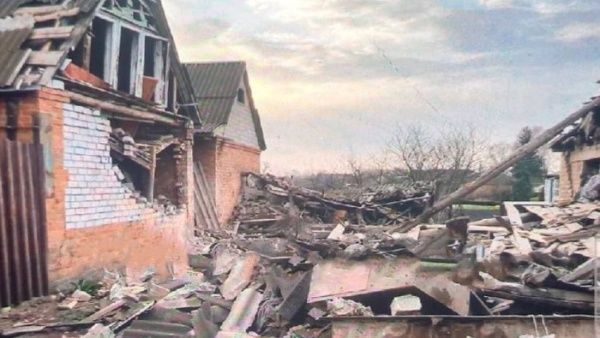
A resident of the village of Golovchino was injured as a result of shelling from the Ukrainian side. | Photo: Раньше всех Ну почти
Published April 19, 2022 (3 hours 56 minutes ago)
This district of Belgorod has been attacked by Ukrainian forces more than once, in the midst of the conflict.
The governor of the Russian province of Belgorod, Viacheslav Gladkov, reported Tuesday that Ukrainian troops shelled the town of Golovchino, located about 10 kilometers from the border with Ukraine, at dawn.
“There was a shelling of the village of Golovchino, in the Graivoronski district. Damage has been recorded, "said the politician on his Telegram channel and said that he would attend the scene of the event.
“There is one injured, she is a local resident. Now they are giving him the necessary medical help, ”she announced shortly after the first statements, but did not specify the nature of the injuries.
The distance from the border to the village of Golovchino is about 10 kilometers, and it is 50 kilometers from Belgorod. The district has already suffered raids by Ukrainian forces.
Last week the province of Belgorod suffered attacks in the villages of Spodariúshino and Zhuravlivka by Ukrainian nationalists. However, this attack left no civilians injured or dead.
In addition, on April 1 there were explosions that left no injuries. On the same day, two Ukrainian Mi-24 helicopters flew low, crossed the border and entered Belgorod, where they attacked an oil depot, according to the Russian Defense Ministry.
https://www.telesurtv.net/news/gobernad ... -0002.html
Google Translator
*********************************************************
Who benefits from the crisis in Ukraine?
April 19, 2022 José R. Oro

Graphic: Rebelion
The conflict in Ukraine combines factors such as the attempt to weaken or destroy Russia by Western powers led by the United States, who want to maintain an impossible unipolar world, the extension of NATO to the far reaches of Eastern Europe, and also financial and profit elements.
Within the field of economic robbery, two important components are continuing to dedicate huge amounts of money to the Military-Industrial Complex; and the other that becomes more evident every day in the incessant threats of the Joe Biden administration to Russia, the desire of American energy producers to invade European markets with natural gas from fracking.
The rogue media saturates the world with speculation about Russia’s intention to annex Ukraine and speculates in the most ridiculous way about Moscow’s alleged desire to freeze Europe by cutting off gas supplies, but very few reporters in the corporate media ask who will benefit financially. of the confrontation in Eastern Europe.
Because the answer to this question clearly reveals that the source of the conflict is not Russia.
Putting together a few pieces of the puzzle, some clear winners in the Ukraine crisis begin to emerge, be it a limited conflict or “special operation” as it has been up to now, or a real full-scale war: the multinational oil and gas corporations.
And it would seem that this industry found the most powerful spokesperson in the world to represent its interests: the United States government and the seraphic President Biden, whose son Hunter Biden and Burisma Holdings (the largest Ukrainian gas producer), are as we say in Cuba “Flesh and Bone”.
Chevron, ExxonMobil, Shell and several others, along with hundreds of drilling contractors and equipment suppliers who work with them, want to vastly increase exports to gas-hungry Europe, but Russia and its state-owned Gazprom are standing in the way.
Currently, Russian natural gas accounts for more than 30 percent of all imports into the European Union. Major EU powers Germany and France get 40 percent of their gas from Russia, while other countries, such as the Czech Republic and Romania, use only that of the Eurasian nation.
In order to dislodge the competition and gain a greater or total market share, the multinationals need to curb the supply of gas from the East.
The free market?
World market prices for oil and natural gas have soared in recent months and especially in recent days, driven by several factors: record demand in Europe and Asia as the manufacturing industry recovers somewhat from the pandemic, supply limited, as some of these facilities are only starting to come back online.
Stockpiles of stored goods are pretty depleted due to a long, cold winter in 2020 and now 2021-22, and countries like China and Germany moving away from dirtier fossil fuels like coal and the ever-unpopular nuclear power.
Producers in the United States want to participate and control this bonanza, especially in Europe, where gas prices have increased fivefold in 2021 and now, with the military actions in Ukraine, they are going to go through the roof.
The United States is the largest producer of gas in the world and extracts more from the ground every day. That has been the case since 2005, when output, which had been level for decades, rose sharply.
Flush with gas, American corporations today increasingly look to Europe as a customer, and the U.S. government acted both enthusiastically and viciously as an active seller of them.
Thanks to a 2018 deal struck between the Trump administration and the EU, U.S. gas sales to Europe rose steadily, from 16 percent in 2019 to 28 percent at the end of 2021.
However, there is a problem that could limit growth: U.S. natural gas is expensive, considerably more than that from Russia. Hydraulic fracking substantially increases production costs.
Furthermore, in order to be exported to international customers, U.S. gas must be liquefied and loaded/unloaded onto tankers at expensive specialized terminals.
Converting fracked shale gas to liquefied natural gas (LNG) can more than double the cost for U.S. companies, putting them at a disadvantage against cheap Russian gas that travels through pipelines.
The international gas pipeline project, known as Nord Stream 2, is particularly threatening to the sales of these multinationals.
Built jointly by Germany and Russia under the Baltic Sea, it would provide easy and affordable access to gas for the EU. For Russia, it is a guaranteed means of accessing its biggest buyers. For both the EU and Russia, Nord Stream 2 means providing and receiving huge amounts of gas at low cost. Once operational, it will transport more than double the amount of Russian gas that currently flows to Europe. That is why this immense work of engineering had to be stopped at any cost. War for the imperialists is always the first option.
A convenient crisis for big capital
How convenient then that tensions between the U.S. and its Ukrainian ally on the one hand and Russia on the other escalated just as the finishing touches were being put on Nord Stream 2 in late 2021.
With its own pipeline revenues in trouble, Ukraine’s government pressured Washington throughout the summer of last year to impose sanctions on Nord Stream 2 and the German and Russian companies behind it.
The Democrat-dominated U.S. Congress sided with Ukraine’s rulers, inserting the desired sanctions into the defense spending (military budget) bill.
President Biden, knowing that his European allies were staunchly opposed to anything that threatened their energy supplies and that the infrastructure was simply not in place on both sides of the Atlantic to fill the void left by a sudden drop in gas supply Russian, said he would not approve sanctions against Nord Stream 2. But it is one thing to say and another to do.
Both Republican and Democratic lawmakers in Congress backed down, presenting the sanctions as a way to “deter Russian aggression against Ukraine.”
Ultra-conservative Cuban-American Senator Ted Cruz of Texas, who represents the top fracking gas-producing state in the United States and is the industry’s first recipient of campaign donations from the industry, has been one of the strongest advocates of sanctions. against Russia.
Endless warnings of an “imminent” Russian invasion and the sending of NATO troops and weapons to Eastern Europe finally gave the “desired result” for the U.S. and NATO.
With Europe’s energy security jeopardized by Russian military action, who is ready to help? None other than the U.S. gas industry, of course.
Profit ploy?
So is the whole Ukraine thing just a scheme to protect and increase profits for U.S. natural gas producers?
The crisis was not caused solely by gas sales. That would be an oversimplification of a very complex situation with historical roots that go back long before the fracking boom began in the United States.
The United States and NATO have been engaged in a campaign against Russia since the 1940s. NATO was founded as a military alliance to attack the Soviet Union, an instrument to promote Washington’s imperial interests in Europe and contain the growth of socialism. In the continent.
When the U.S.SR fell and the anti-communist cause lost its reason for being, the West took advantage of Russia’s weakness to deploy its armed might to the borders of that country. As it was rebuilt, the new logic became “containment” of a supposedly aggressive Russia.
The effort to bring Ukraine, second in importance among 15 republics of the former U.S.SR, under the military control of the United States, and install nuclear missiles within a five-six minute flight from Moscow, remains at the center of the crisis in Eastern Europe.
Russia’s key and inalienable security demands still revolve around this issue. That Ukraine becomes a nuclear nation is also completely unacceptable.
But the wishes of the powerful oil and gas industry in the United States added a highly complicating factor to the equation. There is a convenient confluence of imperialist geopolitical goals and capitalist economic interests at work.
And barring a full nuclear Armageddon between the U.S. and Russia, some people will emerge victorious no matter what. Let’s not forget the name of Hunter Biden, and neither that of other “pejes” [?] like Rudy Giuliani et al.
The bet of the gas giants of the United States is that Western Europe immediately joins Washington in sanctioning Russia in the most severe way, and that Germany disconnects Nord Stream 2 “forever”.
Overnight, gas sales in the United States would have to increase for Europe not to freeze. Even more U.S. ships would set sail for European ports carrying LNG and return loaded with profits. For North American oil and gas producers, the situation is beneficial as long as there is a war.
(With information from Prensa Latina)
Source: CubaDebate.cu
https://www.struggle-la-lucha.org/2022/ ... n-ukraine/
***********************************
Briefly about Ukraine. 04/18/2022
April 19, 1:36 am

Briefly about Ukraine. 04/18/2022
1. Mariupol.
After an intense bombardment, the cleansing of Azovstal began. The cleansing is also continuing in the Primorsky region, where individual groups of the enemy are still resisting. Plant them. Ilyich is completely cleared. In fact, it remains to clean up Azovstal.
2. Nikolaev.
Fights of medium intensity in the countryside between Nikolaev and Kherson, the parties are not conducting large-scale offensive operations. On both sides, there is an accumulation of forces for subsequent actions.
3. Odessa.
No significant changes. The enemy continues to announce the threat of landing, but the Black Sea Fleet rather prefers to create such a threat than to implement it, keeping part of the enemy forces near Odessa.
4. Zaporozhye.
On the front line Kamenskoye-Orekhov-Gulyaipole without changes. To the east of Gulyaipol, according to the statements of the Armed Forces of Ukraine, there has been an advance of the RF Armed Forces, bypassing Gulyaipol. AFU lost the village of Malinovka.
5. Novomikhailovka—Ugledar—Velikaya Novoselka.
Significant progress of the RF Armed Forces and the DPR army was not reported. Basically, there is a fire defeat of enemy forces.
6. Marinka.
No significant changes. So far, it has not been possible to pass the DPR army behind the waste heap.
7. Avdiivka.
In the industrial complex of Avdiivka, there are no changes. To the north of Avdiivka, fighting continues in the area of Novobakhmutovka and in the area of Troitsky. Promotion to New York is not yet noted.
8. LPR.
The city of Kremennaya was taken. There is also a promotion in Popasna and its environs. In Frontier fighting on the southern outskirts of the city. Severodonetsk and Lysichansk are unchanged.
9. Raisin.
The RF Armed Forces are fighting in the direction of Barvenkovo and Slavyansk. Part of the territory to the northeast of Oskol has been cleared. The enemy is trying to counterattack the Izyum grouping in order to tie down its offensive activity. The combat here is super intense. The Armed Forces of Ukraine suffer heavy losses in people and equipment.
10. Kharkov.
No significant changes. As before, fighting north of the city and large-scale artillery duels that destroy the villages north of Kharkov and the northern outskirts of Kharkov. Also, the Armed Forces of Ukraine are trying to be active in the Chuguev area in order to try to strain the flank of the Izyum group.
The Armed Forces of Ukraine declare that the RF Armed Forces have begun the 2nd phase of the operation in Donbas. The Armed Forces of the Russian Federation have not yet officially announced this. Nevertheless, today there has been a certain movement, plus the attacks on the Armed Forces of Ukraine and the military infrastructure of Ukraine are on the rise.
https://t.me/boris_rozhin - broadcast events in Telegram (if you are interested, subscribe)
And yes.
https://colonelcassad.livejournal.com/7567468.html
The Need for Drones
April 19, 13:03
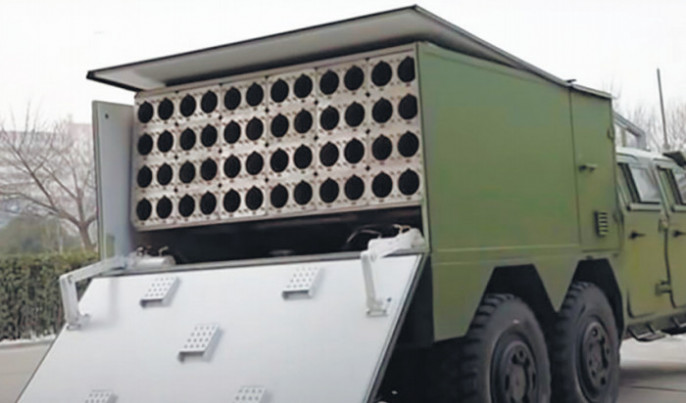
The need for drones
On the subject of drones, the discussion about which continues in Telegram.
1. The number of large army strike / reconnaissance drones should certainly increase. Their production needs to be further increased. The examples of Iran and Turkey show that saturating the army with drones is quite a feasible task for countries that are weaker militarily and industrially and technologically. If necessary, do not hesitate to purchase abroad. For example, I don’t see anything wrong if the Russian Federation buys from China 50-100 Wing Loong-type attack and reconnaissance UAVs, which, in terms of performance characteristics, are not much inferior to the best American or Turkish drones, but are cheaper. Along the way, it is necessary to develop our industrial capacities in order to produce the same "Pacers" and "Outposts" in large numbers (continuing in parallel work to create new models for future wars of the 20s).
2. The role of smaller drones-spotters/observers at the tactical level certainly continues to grow. This was clear even in the middle of the "tenths" during the Syrian and Iraqi campaigns. The wars in Libya and Karabakh reinforced this trend. Accordingly, the issue of saturating the troops with small-sized UAVs for reconnaissance / adjustment is quite acute. It is necessary to increase domestic production, plus, if necessary, to buy in bulk abroad until we provide for ourselves.
3. Such drones are not a prodigy, but a necessary consumable that must be fixed in the regular structure of the armed forces. The help of volunteers is good and wonderful. Society lends a shoulder to the army, the front and rear are working together, but still, we should seriously re-equip the army with modern tactical reconnaissance/correction tools that supplement regular means.
4. Separately, there is the issue of increasing the production and use of loitering ammunition / kamikaze UAVs. They already exist and are used (they were tested back in Syria). But it is obvious that in the future their role on the battlefield will also continue to grow - the current trends in the development of this type of weapons indicate the prospects for the swarm use of such devices and the creation of equipment for the mass launch of loitering ammunition, which at the tactical level pose a great threat due to the fact that tactical air defense of all armies without exception (including the Russian Federation and the United States) cannot provide 100% protection against such drones. Weaker armies are all the more vulnerable to these munitions.
https://t.me/boris_rozhin - zinc
https://colonelcassad.livejournal.com/7568349.html
Google Translator
***********************************
Russia Publishes Data on Foreign Mercenaries in Ukraine
Posted by INTERNATIONALIST 360° on APRIL 18, 2022
400 foreign fighters remain trapped in Mariupol, where Kiev forces have refused an offer to surrender
An estimated 6,824 foreign mercenaries from 63 countries have come to Ukraine to fight for Volodymyr Zelensky’s government, the Russian Defense Ministry stated on Sunday. Of these, 1,035 have been “destroyed,” while several thousand remain. Four hundred foreign fighters are holed up in Mariupol, where nationalist forces, including the neo-Nazi fighters, have refused to surrender.
The most numerous group of foreign fighters (1,717) arrived from Poland, while around 1,500 came from the US, Canada and Romania. Up to 300 people each came from the UK and Georgia, while 193 arrived from the Turkish-controlled areas of Syria.
These figures were announced on Sunday by Defense Ministry spokesman Major General Igor Konashenkov. According to the general, 1,035 foreign mercenaries have been killed by Russian forces and 912 fled Ukraine, leaving 4,877 active in the cities of Kiev, Kharkov, Odessa, Nikolaev and Mariupol.
Roughly 400 of these foreign fighters remain embedded with Ukrainian nationalist battalions in the besieged port city of Mariupol, Konashenkov stated. With most of the city under Russian control, these forces have dug in at the sprawling Azovstal metallurgical plant, a gargantuan Soviet-built factory complex spread over 11 square kilometers.
“Most of them are citizens of European countries, as well as Canada,” Konashenkov stated, adding that Russian forces have intercepted radio communications from the plant in six foreign languages. After the surrender of more than 1,000 members of Ukraine’s 36th Marines Brigade at the Ilyich Steel and Iron Works in Mariupol earlier this week, which Ukraine denies, the Russian military offered the defenders at Azovstal a final chance to lay down their arms and surrender on Sunday morning, promising that “all who lay down their weapons are guaranteed the preservation of life.”
No such surrender took place, and the pounding of heavy guns could be heard near the plant on Sunday afternoon. “In case of further resistance, all of them will be destroyed,” Konashenkov said.
“Let me remind you that foreign mercenaries do not have the status of ‘combatants’ under International Humanitarian Law,” Konashenkov said. “They came to Ukraine to earn money by killing Slavs. Therefore, the best that awaits them is criminal liability and long prison terms.”
Within days of Russia’s military assault on Ukraine, the government in Kiev promised visa-free entry for foreigners willing to take up arms against Moscow’s forces. Potential recruits visited Ukrainian embassies across the West and signed up to fight – often with the blessing of their own governments – and made their way to the battlefield.
However, recruitment was narrowed in March to those with military experience, and paused entirely at the beginning of April. A spokesman for Ukraine’s so-called “International Legion” told Canadian media that sending untrained volunteers to the front was becoming more of a hindrance than a help, and supplies of firearms and ammunition were running low.
Some of those who made the journey shared horror stories online of being sent to the front lines with inadequate weapons and ammo, while recruitment suffered after a Russian missile strike leveled a training center for these foreigners near the Western Ukrainian city of Lvov. “Up to 180 foreign mercenaries and a large quantity of foreign weapons were destroyed,” Konashenkov said at the time.
RT
The Russian Defence Ministry has reliable data on the true losses of the Ukrainian army, the national guard and joined foreign mercenaries.
We publish separate data on the losses of the national guard of Ukraine, obtained from real Ukrainian documents. They disclose information about significant losses among the military personnel of military unit 3057 and the punishers of the Azov special purpose detachment that is part of it (as of March 29, 2022).
Data on combat and non-combat losses in military unit 3057 and circumstances of soldiers’ deaths:
Data on the losses of military personnel of military unit 3057 due to injury or trauma:
The criminal Kiev regime does not recognize its losses, with this publication we prove once again that we are showing the truth!
https://libya360.wordpress.com/2022/04/ ... n-ukraine/
***************************************
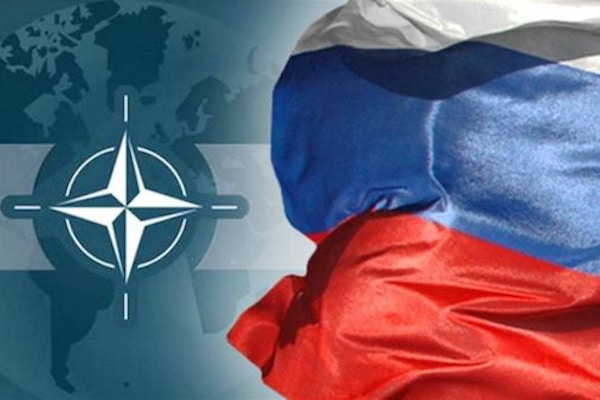
NATO’s military buildup on eastern flank to lengthen, broaden war
Posted Apr 19, 2022 by Rick Rozoff
Originally published: Anti-bellum (April 16, 2022 )
Transferring massive weapons to Ukraine, massing a large number of troops in eastern Europe, and welcoming Sweden and Finland to join the alliance, NATO has been very much engaged itself so far in the conflict between Russia and Ukraine.
Analysts say NATO’s disregard of Russia’s legitimate concerns on security issues and its continuous expansion is the root cause of the outbreak and escalation of this conflict. If it continues to slim down the small buffer zone left between Russia and itself, the situation will undoubtedly go worse.
Deployment in the East
NATO’s eastern flank usually refers to the three Baltic countries, namely Estonia, Latvia and Lithuania, as well as Poland, Slovakia, Hungary, Romania, and Bulgaria.
Before the escalation of the Russia-Ukraine conflict, NATO deployed one combat force in each of the three Baltic countries and Poland, and implemented a rotation mechanism with non-permanent garrison troops there.
But for now, NATO doubles the size of the four above-mentioned combat forces and declared four new NATO battlegroups in Bulgaria, Hungary, Romania, and Slovakia at the NATO [foreign ministers’] summit held last month.
NATO is seen by many as a Cold War vestige, and has been questioned over the necessity of its existence after the end of the Cold War.
The military alliance promised in the 1990s that it would not expand “one inch eastward,” according to then U.S. Secretary of State James Baker. However, led by the United States, NATO has expanded eastward five times since 1999, increasing the number of member countries from 16 to 30, advancing more than 1,000 km eastward, and reaching the Russian border.
Recruitment in the North
In addition to strengthening deployments on the eastern flank, NATO is also recruiting new members on the north wing. NATO Secretary General Jens Stoltenberg has repeatedly said that if Finland and Sweden apply to join NATO, NATO will welcome them and ensure that their entrance will be accepted soon.
In a recent interview with The Telegraph, Stoltenberg said that the alliance is “in the midst of a very fundamental transformation” that will reflect “the long-term consequences” of Russia’s military operation.
Both Finland and Sweden have long pursued a policy of military non-alignment. After the disintegration of the Soviet Union, NATO has failed to win over the two countries several times.
But now Finland and Sweden made some changes in their positions in face of the Russia-Ukraine conflict, delivering anti-tank weapons and ammunition to Ukraine.
***
Some analysts point out that before the escalation of the Russia-Ukraine conflict, Russia had repeatedly confirmed and confided its red line to both the United States and NATO, for which both showed a total disregard. If NATO continues to fan the flames such as taking in new members, it will lead to further escalation of the situation.
https://mronline.org/2022/04/19/natos-m ... oaden-war/
**********************************
Graphic: 31-year history of NATO absorbing, arming Ukraine
April 19, 2022 Struggle - La Lucha
Global Times
April 18, 2022

https://www.struggle-la-lucha.org/2022/ ... g-ukraine/









